Victorian Tobacconist’s Shop Sign of Carved and Polychromed Oak Depicting a Kilted Highlander
A Victorian Tobacconist’s Shop Sign of Carved and Polychromed Oak Depicting a Kilted Highlander with Plumed Bonnet Taking a Pinch of Snuff or ‘Sneesh’ from his Snuff Mull
Mid 19th Century
Size: 68cm high - 26¾ ins high / base: 16.5cm dia. - 6½ ins dia. (max)
Mid 19th Century
Size: 68cm high - 26¾ ins high / base: 16.5cm dia. - 6½ ins dia. (max)
A Victorian Tobacconist’s Shop Sign of Carved and Polychromed Oak Depicting a Kilted Highlander with Plumed Bonnet Taking a Pinch of Snuff or ‘Sneesh’ from his Snuff Mull
Mid 19th Century
Size: 68cm high - 26¾ ins high / base: 16.5cm dia. - 6½ ins dia. (max)
Mid 19th Century
Size: 68cm high - 26¾ ins high / base: 16.5cm dia. - 6½ ins dia. (max)
The golden age of trade signs lasted from the 17th century to the mid 19th century. By 1614 it was claimed that there were already seven thousand tobacconists in London so the signs alerting potential customers must have been one of the most familiar sights on any town or city street. They were placed on the door post, on the counter or outside the shop. The early figures were of blackamoors wearing a skirt of tobacco leaves and a favourite address would have been ‘At the sign of the Blackamoor’. Later, Scotland’s kilted Highlander became popular. A tobacconist of the Haymarket in Edinburgh, David Wishart, had a six foot carved wooden Highlander outside his shop in 1720 and is thought to be the first to use the sign of the Scotsman albeit wearing a flat cap, jacket and trews, and carrying a broadsword and targe. Mr Wishart was a Jacobite sympathiser and therefore advertised that he offered a safe smoking parlour rendezvous behind his shop.
Later the flat cap was converted into a plumed bonnet, and the trews became a kilt, the sword and targe, a snuff mull. The rise of Glasgow as Britain’s leading port dealing with tobacco from America, especially after the Act of Union in 1707, helps explain the use of the Highlander as a sign. Smaller figures such as this example designed to be seen in the round, were sometimes placed on a barrel of snuff inside the shop. Charles Dickens in Little Dorrit (1855 - 7) described a tobacconists on the corner of Horsemonger Lane in Southwark: ‘The business was of too modest a character to support a life-size Highlander, but it maintained a little one on a bracket on the door post, who looked like a fallen cherub that had found it necessary to take to a kilt’.
Later the flat cap was converted into a plumed bonnet, and the trews became a kilt, the sword and targe, a snuff mull. The rise of Glasgow as Britain’s leading port dealing with tobacco from America, especially after the Act of Union in 1707, helps explain the use of the Highlander as a sign. Smaller figures such as this example designed to be seen in the round, were sometimes placed on a barrel of snuff inside the shop. Charles Dickens in Little Dorrit (1855 - 7) described a tobacconists on the corner of Horsemonger Lane in Southwark: ‘The business was of too modest a character to support a life-size Highlander, but it maintained a little one on a bracket on the door post, who looked like a fallen cherub that had found it necessary to take to a kilt’.
Ex Private English collection
Victorian Tobacconist’s Shop Sign of Carved and Polychromed Oak Depicting a Kilted Highlander
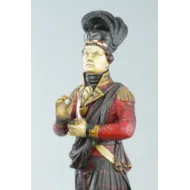
SOLD
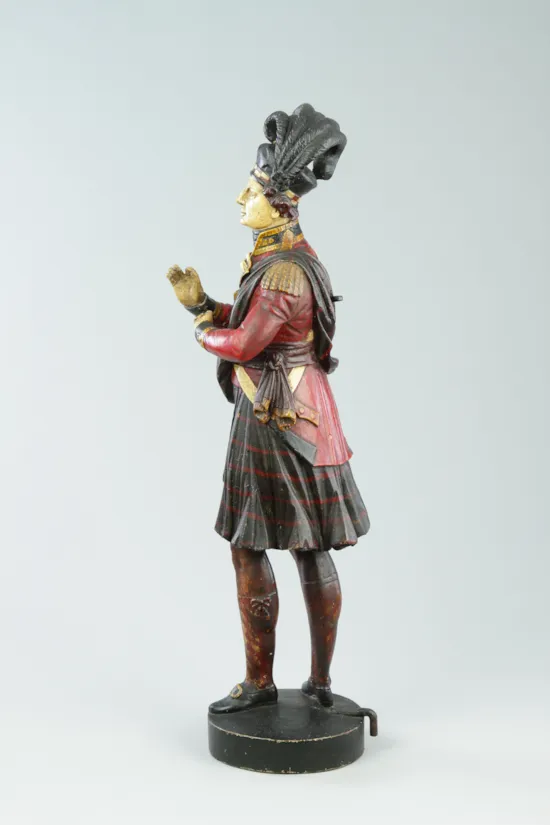
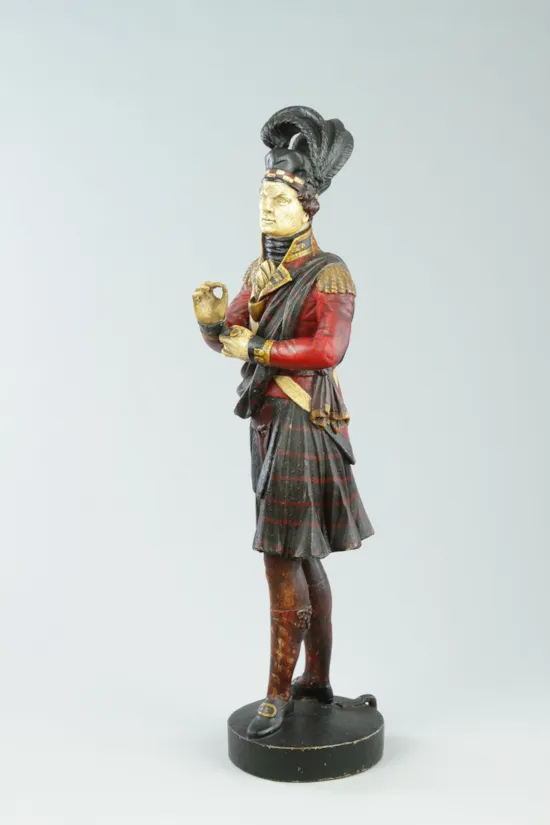
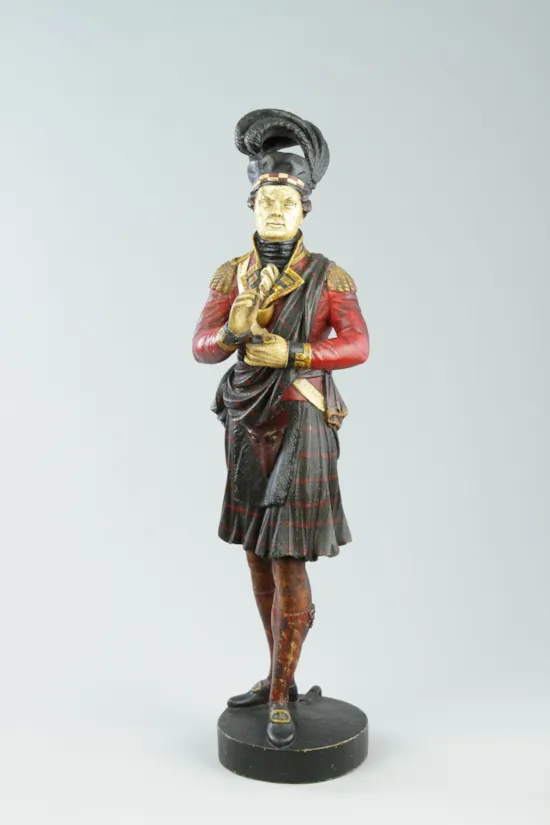
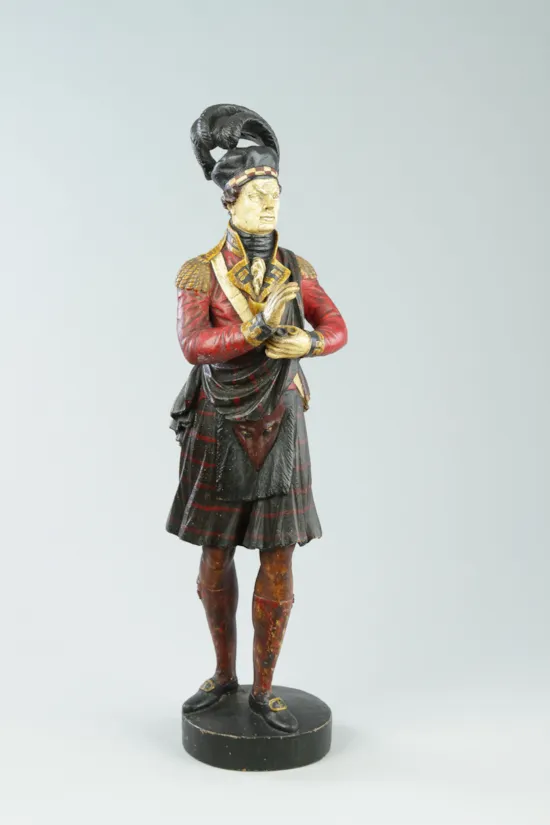
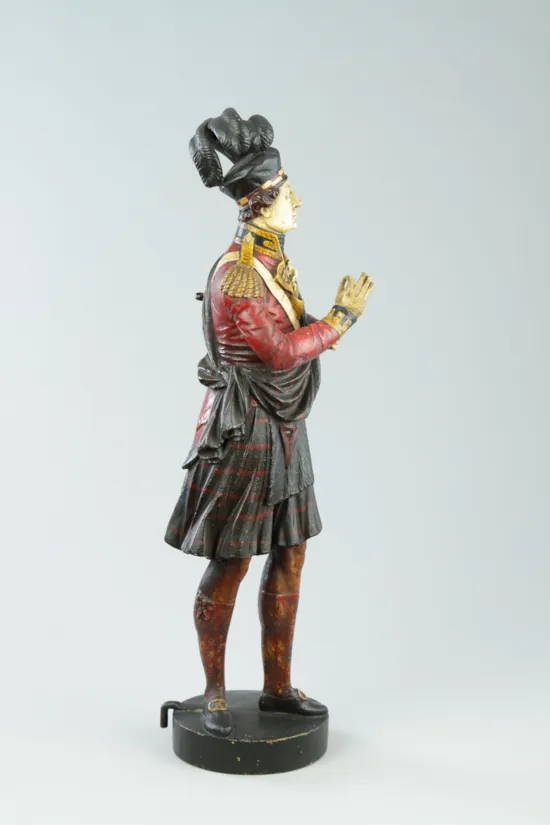
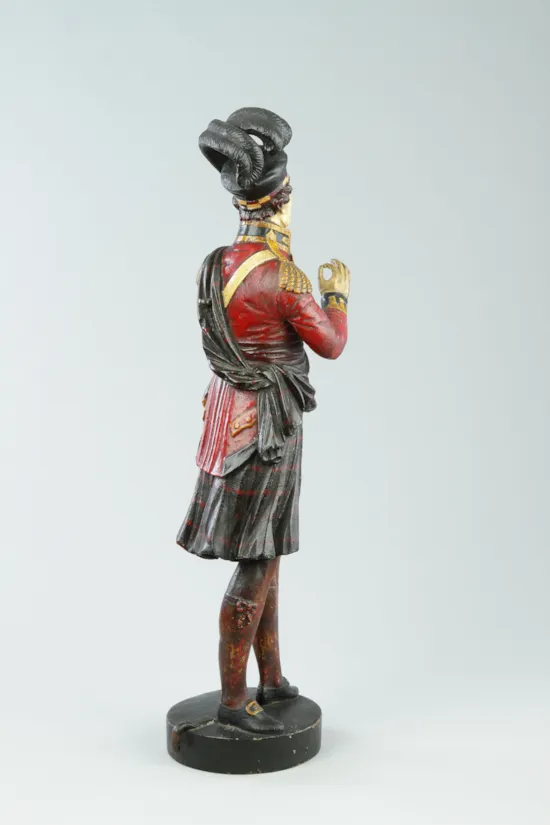
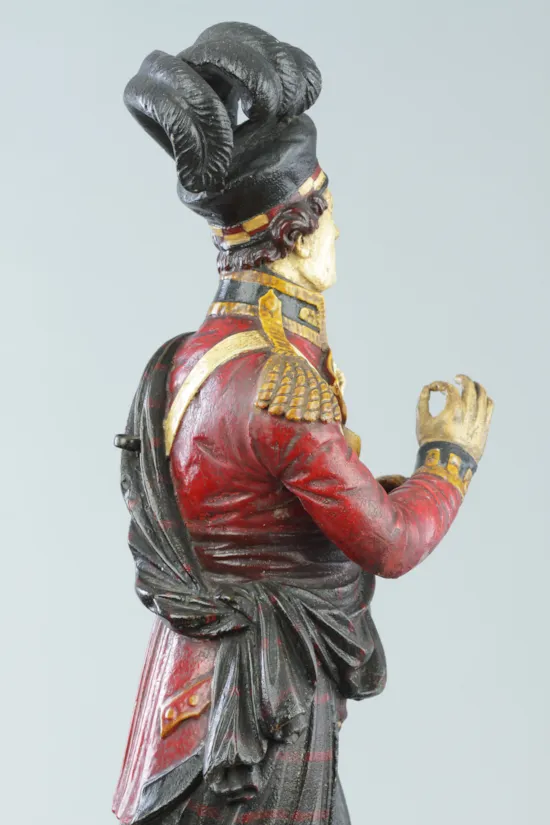
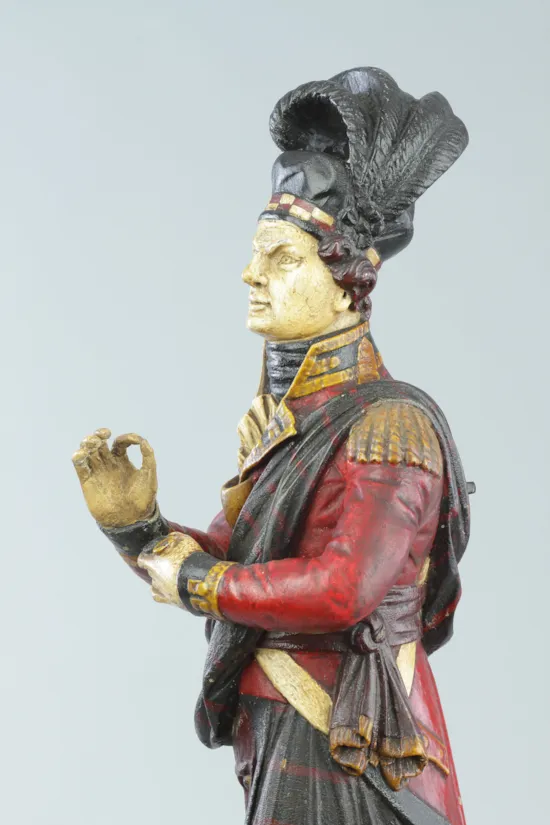
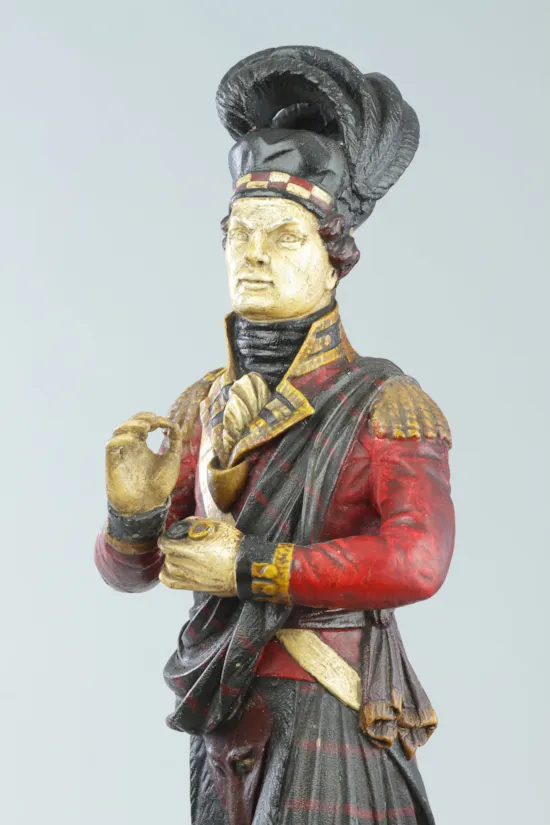
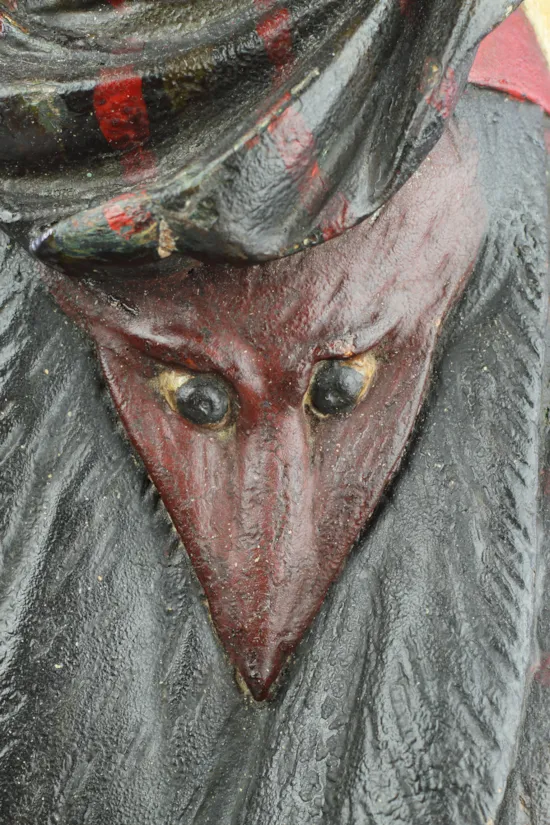
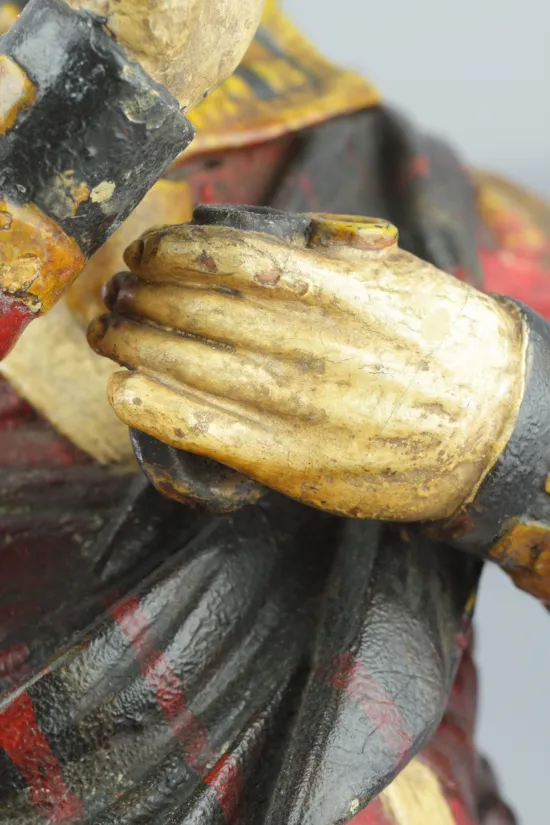
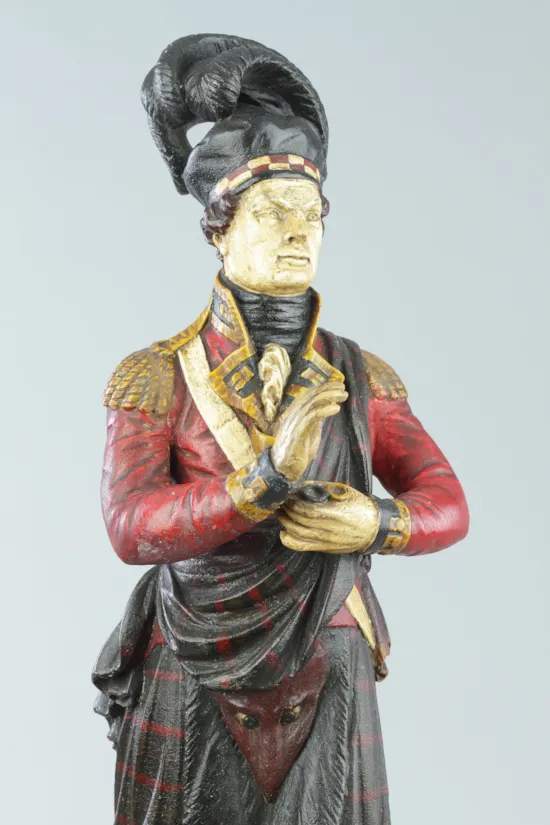












YOU MAY ALSO LIKE

